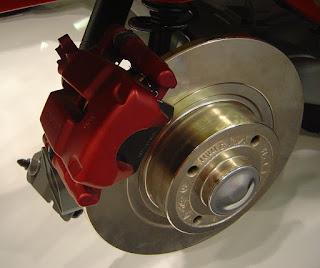Experimentation in the engineering world is a common activity. Engineers are always trying to find ways that could save the environment. Often the product is semi-successful but never one hundred percent.
A pneumatic motor or compressed air car works using simple physics laws. Gas will always try to find an open space to escape through. When picturing the pneumatic car imagine you pop a balloon filled with air using a needle. The balloon will explode releasing the air with immense force.
These pneumatic cars have a compressed air tank that has to be refilled after every drive. To fill up one of these tanks, the car has to be plugged in to retrieve air from around the car. The process takes up to two hours and might not be efficient for the everyday driver but it is definitely a start to saving the environment. Air that is sucked up into the compressed air tank is used to control the pistons to power the engine.
The accelerator will operate a valve on the tank where the air gets released. The compressed air will then enter a pipe that leads to the engine. As the air expands within each cylinder head where the piston is, the crankshaft will turn. The crankshaft is the mechanism that makes the axle turn making the car move forward.
This type of car will only reach to about 60 kilometres per hour at initial movement. Once the car passes that speed, the motor will activate to operate an in-car pneumatics compressor so that it can compress more air and provide extra power to the engine. The mechanisms of the car also heat the air upon arrival to the engine. Heated air increases volume which means that the car will be able to move faster.
The pneumatic car will only require petrol for the motor when the car reaches more than 60 kilometres per hour. This will pollute the air slightly but it is a great improvement on our everyday petrol or diesel engines.
This type of car is also incredibly light weighing just under a ton. Most light weight cars usually weigh about 1.2 tonnes or 1200 kilograms.
The best part about this car is that all the other mechanisms will remain the same. For example the braking procedure still involves brake discs and brake pads. Plus non-feeding components can easily be fixed or repaired if they ever get worn down.




0 Comments